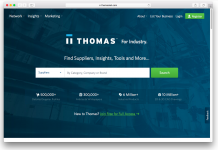It’s hard to make generalizations about the retail industry right now. Consumer spending is as high as ever. Yet the where, when, how, and what on which consumers are spending is transforming.
More commerce is shifting online, brick-and-mortar is being redefined, and legacy brands are being replaced by upstarts. For all those reasons, the only thing certain about the retail industry is that it’s being fundamentally disrupted. Here are some of the trends driving that disruption:
Acquisitions and Consolidations
Amazon purchased Whole Foods in 2017, and similar large-scale acquisitions are likely to continue. Competition in retail is aggressive right now, leading existing brands to want to consolidate their positions. Furthermore, the valuation of these brands is often depressed, making major acquisitions a strong strategic possibility. We should expect to see many more brands get much bigger, much different, or disappear completely.
Of course, it’s not just Amazon. In October 2017, Ace Hardware purchased a majority share in The Grommet, a product launch platform empowering “makers” to bring their inventions to market. This gives Ace a strong foothold with early product adopters who are known for being big spenders.
Personalization Becoming a Priority
Consumers have grown used to the customized shopping experiences that are standard online. In-person retail is increasingly trying to match this level of customization. That could mean offering personalized coupons, product recommendations, and service/support. The trend is being driven by vast new volumes of retail data. Now that stores can understand consumers on an individual level, they are compelled to treat them like individuals. This is an opportunity for the stores that are ambitious about collecting and utilizing data. For those that aren’t, however, delivering personalized experiences will be difficult when it’s possible at all.
Next-Generation Retail Analytics
The concept of retail analytics is not new, but the scale it now operates on certainly is. Essentially, every aspect of the in-store experience is now digitized. On top of this, physical retailers are stepping up their online and omnichannel efforts. What this means is that stores now have massive amounts of data about their customers, inventory, staff, competitors, marketing efforts and much more. All of this data is ripe for retail analytics, which has disruptive implications across the board. For instance, some data analytics solutions work to answer questions retailers have yet to ask, thus providing new inroads to better understand consumer behaviors and opportunities.
Good and Bad Technology
It’s undeniable that retail is becoming more tech-driven in every setting. It’s also true that there are a number of new retail technologies with dubious or limited value. For instance, VR headsets have some interesting applications, but it’s unlikely that every store will need one five years from now.
Making the right tech investments will become one of the most important and most disruptive forces in retail moving forward. The right investment promises surges in sales, advantage over the competition, and long-term stability. The wrong investments, however, could bleed out budgets, alienate customers, and create widespread confusion. It’s essential for all today’s retailers to evaluate what capabilities they really need, then identify which tech is able to deliver them.
It doesn’t matter if your outlook on retail is positive or negative. What is clear is that things are changing and that the methods of the past are no longer adequate. Retailers face an evolve or die scenario, and now is a time to act boldly. Those that commit to the future rather than cling to the past are the ones we will still be shopping at, in a decade.
Find a Home-Based Business to Start-Up >>> Hundreds of Business Listings.

















































